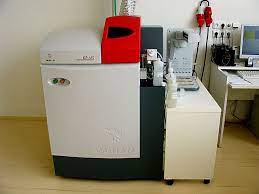The Fundamentals of ICP-MS: What Makes It a Key Analytical Tool
In the world of analytical chemistry, precision and accuracy are paramount. Researchers and scientists rely on various instruments and techniques to analyse samples with precision, sensitivity, and speed. One such indispensable tool in the field is Inductively Coupled Plasma Mass Spectrometry, commonly known as ICP-MS.
This versatile and powerful analytical technique has revolutionised how we detect and quantify elements in a wide range of samples, from environmental to biological specimens. In this comprehensive guide, we will explore the fundamentals of ICP-MS and understand what makes it a key analytical tool.
The Basics of ICP-MS
What is ICP-MS?
Inductively coupled plasma mass spectrometry (ICP-MS) is a sophisticated analytical technique used to precisely determine elemental composition in various samples. It combines the capabilities of two well-established methods: Inductively Coupled Plasma (ICP) and Mass Spectrometry (MS).
ICP is a high-temperature ionisation source that turns sample atoms into ions by exposing them to a plasma flame. This highly energetic plasma can reach temperatures exceeding 10,000°C, ensuring the complete atomisation and ionisation of the sample.
Conversely, MS is a technique used to separate and quantify ions based on their mass-to-charge ratio (m/z). By applying a magnetic or electric field, ions are separated and detected, allowing for the identification and quantification of elements.
How Does ICP-MS Work?
ICP-MS operates by introducing a sample into the ICP, which is atomised, ionised, and turned into a stream of ions. These ions are then sent into the mass spectrometer, separated based on their mass-to-charge ratio.
Sample Introduction: The sample is usually introduced into the ICP-MS system via a nebuliser, aerosolising liquid samples, or a laser ablation system for solid samples. The aerosolised sample is then transported into the ICP.
Ionisation: In the ICP, the high-temperature plasma ionises the atoms, creating a stream of positively charged ions.
Mass Separation: The ionised species are then sent through a series of ion optics, which separate ions based on their mass-to-charge ratio. This separation allows for the simultaneous measurement of multiple elements in the sample.
Detection: Finally, the ions are detected by a mass spectrometer, which quantifies the number of ions at each specific mass-to-charge ratio. This information is then used to determine the elemental composition and concentration of the sample.
Key Advantages of ICP-MS
ICP-MS offers several key advantages that make it an indispensable analytical tool:
- High Sensitivity: ICP-MS can detect elements at extremely low concentrations, often in parts per trillion (ppt) or even parts per quadrillion (ppq), making it suitable for trace element analysis.
- Wide Analytical Range: ICP-MS can analyse a wide range of elements, from the lightest (e.g., hydrogen) to the heaviest (e.g., uranium), with a broad dynamic range.
- Speed and Precision: It provides rapid analysis with high precision, making it valuable for routine and high-throughput applications.
- Isotope Resolution: ICP-MS can distinguish between different isotopes of the same element, allowing for isotopic ratio measurements and applications in radiometric dating and isotopic tracing.
Chapter 2: Applications of ICP-MS
Environmental Analysis
ICP-MS plays a crucial role in environmental monitoring and assessment. It can detect and quantify trace elements in soil, water, air, and biota, helping researchers understand environmental contamination, pollution sources, and the impact of human activities on ecosystems.
- Heavy Metal Analysis: ICP-MS is used to measure heavy metals such as lead, mercury, and cadmium in soil and water, which harm the environment and human health.
- Monitoring Rare Earth Elements (REEs): ICP-MS is employed to analyse rare earth elements critical for producing electronics, renewable energy technologies, and hybrid vehicles.
Pharmaceutical and Biomedical Research
In the pharmaceutical and biomedical fields, ICP-MS is utilised for drug development, toxicology studies, and understanding the distribution of trace elements in biological samples.
- Metallomics: ICP-MS enables the study of metallomics, which explores the role of metal ions in biological processes and diseases, such as cancer and neurodegenerative disorders.
- Bioimaging: ICP-MS imaging allows for spatial visualising of elements in tissues, helping researchers investigate metal distributions in biological specimens.
Geological and Earth Sciences
Geologists and earth scientists rely on ICP-MS for geological exploration, mineral analysis, and understanding of the Earth’s history.
- Geochronology: ICP-MS is used for radiometric dating by measuring isotopic ratios of elements like uranium and thorium, allowing scientists to determine the age of rocks and minerals.
- Mineral Analysis: It assists in identifying and quantifying elements in various mineral deposits, aiding in resource exploration.
Food and Beverage Industry
ICP-MS is employed in the food and beverage industry for quality control, ensuring the safety and compliance of products with regulatory standards.
- Heavy Metal Testing: It detects harmful heavy metals, such as arsenic and lead, in food and beverages.
- Nutritional Analysis: ICP-MS helps assess the nutritional content of food products, including essential trace elements like iron, zinc, and selenium.
Challenges and Limitations
While ICP-MS is a powerful analytical tool, it is not without challenges and limitations:
Sample Preparation
Sample preparation can be time-consuming and complex, especially for solid samples. Proper handling, digestion, and dilution are crucial to ensure accurate results.
Interferences
ICP-MS can suffer from interferences, where ions of interest may overlap with ions from other elements or isobaric species. Collision/reaction cell technology and different mass analysers are used to address this issue.
Cost
ICP-MS instruments are expensive to acquire and maintain, and operating costs can be high due to the need for consumables like argon gas and specialised torches.
Skilled Personnel
The operation and maintenance of ICP-MS instruments require skilled personnel with a deep understanding of the technique and the specific instrument.
Recent Developments and Future Trends
The field of ICP-MS continues to evolve with ongoing advancements and innovations. Some recent developments and future trends include:
- Multi-Collector ICP-MS: This technology allows for precise isotopic ratio measurements, revolutionising applications in geochronology and isotopic tracing.
- Nanoparticle Analysis: ICP-MS is being adapted to analyse nanoparticles, aiding in studying nanomaterials and their impact on health and the environment.
- Automation and Miniaturization: Efforts are being made to automate sample preparation and miniaturise ICP-MS instruments, making them more accessible and cost-effective.
- Hyphenated Techniques: Combining ICP-MS with other analytical techniques, such as liquid chromatography (LC-ICP-MS) or gas chromatography (GC-ICP-MS), expands its capabilities and applications.
Conclusion
Inductively Coupled Plasma Mass Spectrometry (ICP-MS) is undeniably a key analytical tool that has transformed the field of analytical chemistry. Its ability to detect and quantify elements at ultra-trace levels in various samples makes it indispensable in multiple applications, from environmental analysis to pharmaceutical research. While ICP-MS presents challenges and limitations, ongoing developments promise to address these issues and expand its capabilities.

Greetings! I’m thrilled to introduce myself as a dedicated blogger with a fervent passion for crafting meticulously researched and insightful blogs. My mission is to provide you, the readers, with a treasure trove of valuable information. Join me in this exciting adventure of discovery – Thanks






